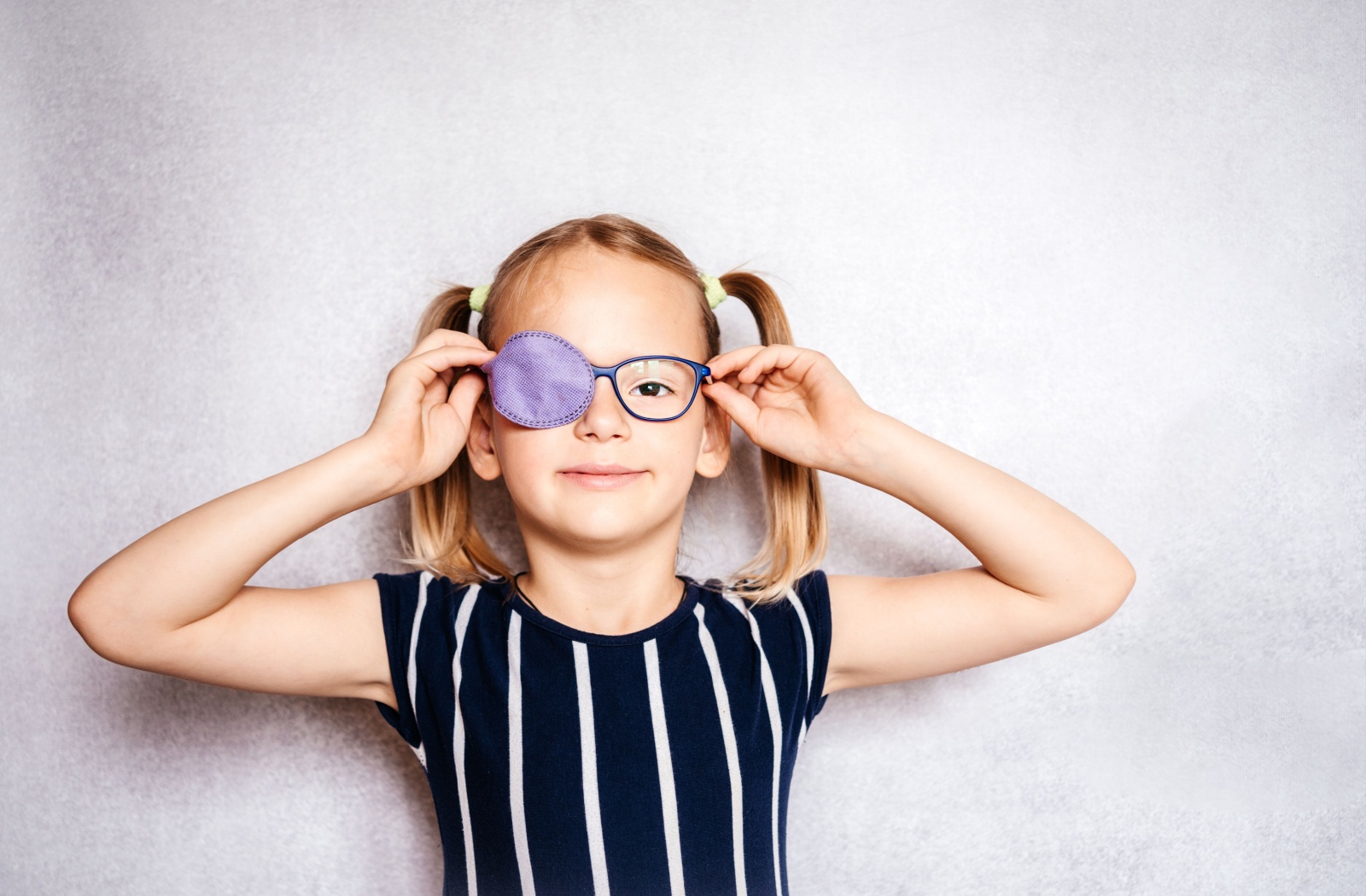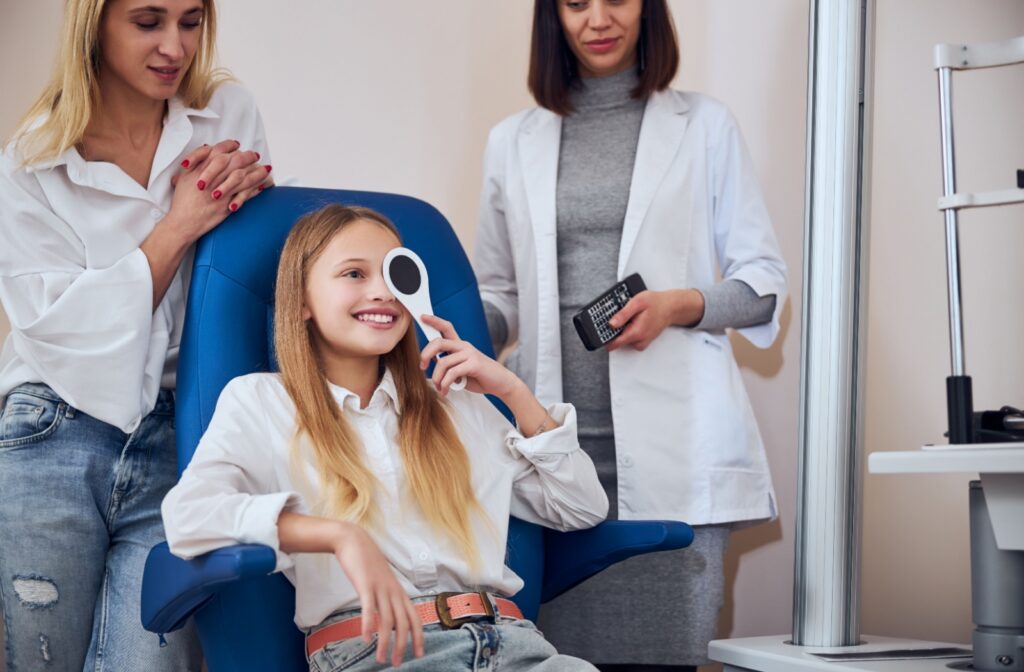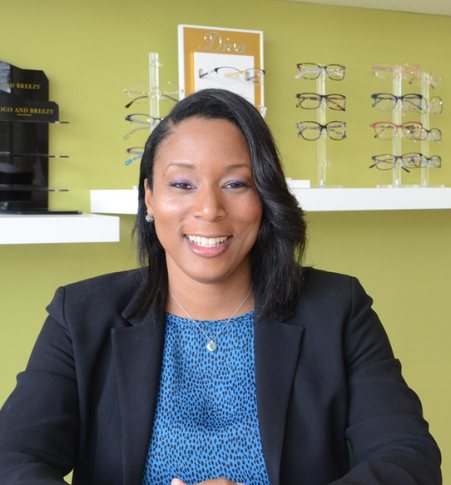Being a parent means striving to give children the best start in life. These early years are essential for their development, and their vision is no different. Lazy eye, also known as amblyopia, is more common than you might think. Lazy eye is a condition that occurs when the brain and 1 eye don’t communicate well with each other. The result, if not treated early, is poor vision in the affected eye.
An optometrist can treat lazy eye at all ages, but it’s significantly easier to correct in children. Recognizing early signs can therefore make a world of difference to your child’s vision.
What Is Amblyopia & How Does It Affect Your Child?
Lazy eye, also known as amblyopia, is a condition that often starts in infancy or early childhood. It usually occurs when the brain and 1 eye don’t communicate properly. While the affected eye may look normal, it isn’t being used effectively, causing the brain to favor the stronger eye.
As the stronger eye takes over, the brain uses the weaker eye less and less. If not treated, this disuse of the weaker eye can lead to permanent vision impairment. While the causes of amblyopia aren’t always entirely clear, it is thought to potentially stem from:
- Strabismus: An eye misalignment where 1 eye turns in, out, up, or down.
- Refractive Errors: Errors involving refraction of light onto the retina, for instance, farsightedness, nearsightedness, or astigmatism.
- Obstruction: Anything that obstructs vision in 1 eye, such as cataracts or a droopy eyelid.
Early detection of amblyopia is vital. The earlier you detect and treat it, the better the chances that a child will develop normal vision. Because 3 out of 100 children develop the condition, pediatricians and optometrists usually screen for amblyopia during routine check-ups; however, as a parent, you should be aware of the signs. These include:
- Squinting or closing 1 eye
- Head tilting
- Poor depth perception
- Complaints of visual disturbances
If you notice any of these symptoms, don’t wait. Consult an eye specialist immediately.
Treatment Options for Young Children
Unfortunately, your child won’t simply “outgrow” amblyopia. Moreover, treating amblyopia in young children is generally more effective than treating it in adults. The primary goal is to train the brain to use the weaker eye to strengthen its vision. Treatment options include:
- Eye patching: Covering the stronger eye with a patch encourages the brain to use the weaker eye.
- Atropine drops: These drops temporarily blur the stronger eye’s vision, making the weaker eye work harder.
- Corrective lenses: Glasses or contact lenses can correct vision problems that contribute to amblyopia.
- Vision therapy: Exercises and activities designed to improve coordination and focus in the weaker eye.
Doctors are even experimenting with new methods for treating amblyopia using computerized therapy and virtual reality. Our knowledge of correct amblyopia is growing all the time!

The Challenges of Treating Lazy Eye in Adults
While it’s not impossible to treat amblyopia in adults, it’s considerably more challenging. The brain’s plasticity—its ability to change and adapt—diminishes with age, making it harder to retrain the eyes and brain to work together. Since amblyopia is a brain disorder, it can’t be treated with surgery like strabismus can.
Treatment for adults typically involves a more intensive regimen of vision therapy, and may take longer to produce results.
The Importance of Regular Eye Check-ups
Regular eye check-ups are crucial for spotting and treating vision problems like lazy eye early. Children’s visual needs change as they grow, and routine exams can uncover issues before they affect development and learning. Early intervention can greatly improve a child’s quality of life, helping them keep healthy vision during their formative years.
Parents should prioritize eye exams at these ages:
- 6–12 Months: First full eye exam to assess overall vision health.
- 3–5 Years: Vision screening to detect any potential issues before entering school.
- Ages 6–18: Yearly eye exams to keep track of vision changes and support healthy development during school years.
Today Is the Time to Act on Lazy Eye
While there may be advances in treatments for adult amblyopia, it’s still much easier to treat in younger patients. You have the power to affect your child’s future vision, so don’t delay if you suspect your child has amblyopia. Your child’s vision is too important to leave to chance.
Schedule a comprehensive eye exam with our experienced team at River City Vision Center. We see kids as young as 7 years old, and we’re passionate about helping them get all they can out of their vision!
Early intervention is key to successful treatment, but remember, it’s never too late to seek help. We’re also here to help adults struggling with lazy eye, and we’ll do whatever we can.
Visit our website to book your appointment. Let’s work together to create a crystal-clear world for your child!





